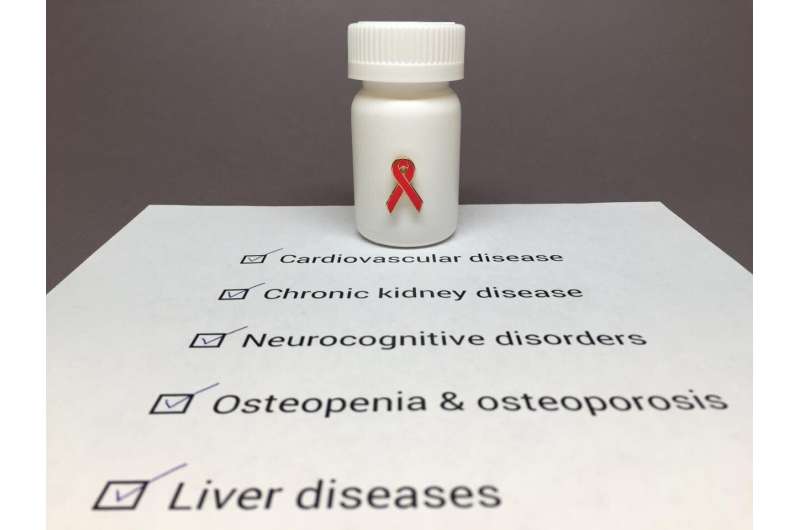Efforts to end the HIV epidemic must not ignore people already living with HIV

Efforts to prevent new HIV transmissions in the United States must be accompanied by advances in addressing HIV-associated comorbidities to improve the health of people already living with HIV, National Institutes of Health experts assert in the third of a series of JAMA commentaries. Previous commentaries detailed the proposed Ending the HIV Epidemic: A Plan for America, which aims to reduce new HIV transmissions in the United States by 75% in five years and 90% in 10 years, and discussed the challenges posed by the emerging opioid injection epidemic in rural areas.
Assuming the aspirational goals of Ending the HIV Epidemic are achieved, at least one million people in the United States still will be living with the virus. With effective antiretroviral therapy (ART), people with HIV can expect a near-normal lifespan. But even when treated with ART, people living with HIV are at heightened risk for numerous comorbidities, including heart disease, kidney disease, osteoporosis, liver disease, certain cancers and neurocognitive disease.
Successfully addressing HIV-associated comorbidities will require research advances to better understand how these conditions develop, write Anthony S. Fauci, M.D., director of NIH's National Institute of Allergy and Infectious Diseases (NIAID), and colleagues. Clinical trials to assess treatments for HIV-associated comorbidities and efforts to reduce health care disparities also must be prioritized.
Insight into the mechanisms underlying the chronic immune activation and dysfunction associated with HIV could lead to new therapies to manage numerous HIV-associated comorbidities, including heart disease. In this regard, the REPRIEVE clinical trial is investigating whether a statin medication can reduce the risk of cardiovascular disease among people with HIV. Other factors involved in driving HIV-associated comorbidities include side effects of long-term ART use, such as lowered bone mineral density, and coinfections, such as viral hepatitis. Establishing a better understanding of these comorbidities and how to manage them will be essential to reduce the burden these conditions place on individuals and the health care system, the authors conclude.
More information: Anthony S. Fauci et al, Ending the HIV Epidemic, JAMA (2019). DOI: 10.1001/jama.2019.1343



















